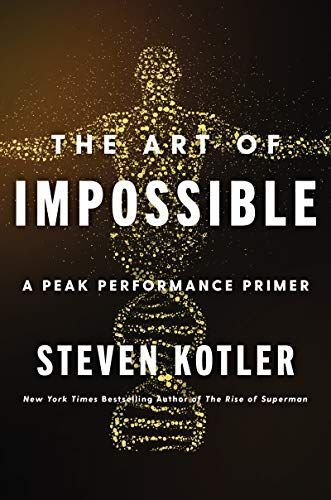
The Art of Impossible A Peak Performance Primer
Bestselling author and peak performance expert Steven Kotler decodes the secrets of those elite performers—athletes, artists, scientists, CEOs and more—who have changed our definition of the possible, teaching us how we too can stretch far beyond our capabilities, making impossible dreams much more attainable for all of us. What does it take to accomplish the impossible? What does it take to shatter our limitations, exceed our expectations, and turn our biggest dreams into our most recent achievements? We are capable of so much more than we know—that’s the message at the core of The Art of Impossible. Building upon cutting-edge neuroscience and over twenty years of research, bestselling author, peak performance expert and Executive Director of the Flow Research Collective, Steven Kotler lays out a blueprint for extreme performance improvement. If you want to aim high, here is the playbook to make it happen! Inspirational and aspirational, pragmatic and accessible, The Art of Impossible is a life-changing experience disguised as a how-to manual for peak performance that anyone can use to shoot for the stars . . . space-suit, not included.
Reviews
BC Hark@vaporvisions
jason birchall@jasonbirchall
里森@lisson
Jeremy Anderberg@jeremyanderberg
Tomek Skupiński@tomekskupinski
Drew Spartz@drewspartz
Danté@dantenel
Highlights
里森@lisson
Page 235
里森@lisson
Page 177
里森@lisson
Page 167
里森@lisson
Page 165
里森@lisson
Page 163
里森@lisson
Page 134
里森@lisson
Page 117
里森@lisson
Page 98
里森@lisson
Page 78
里森@lisson
Page 76
里森@lisson
Page 74
里森@lisson
Page 69
里森@lisson
Page 68
里森@lisson
Page 61
里森@lisson
Page 57
里森@lisson
里森@lisson
里森@lisson
Page 37